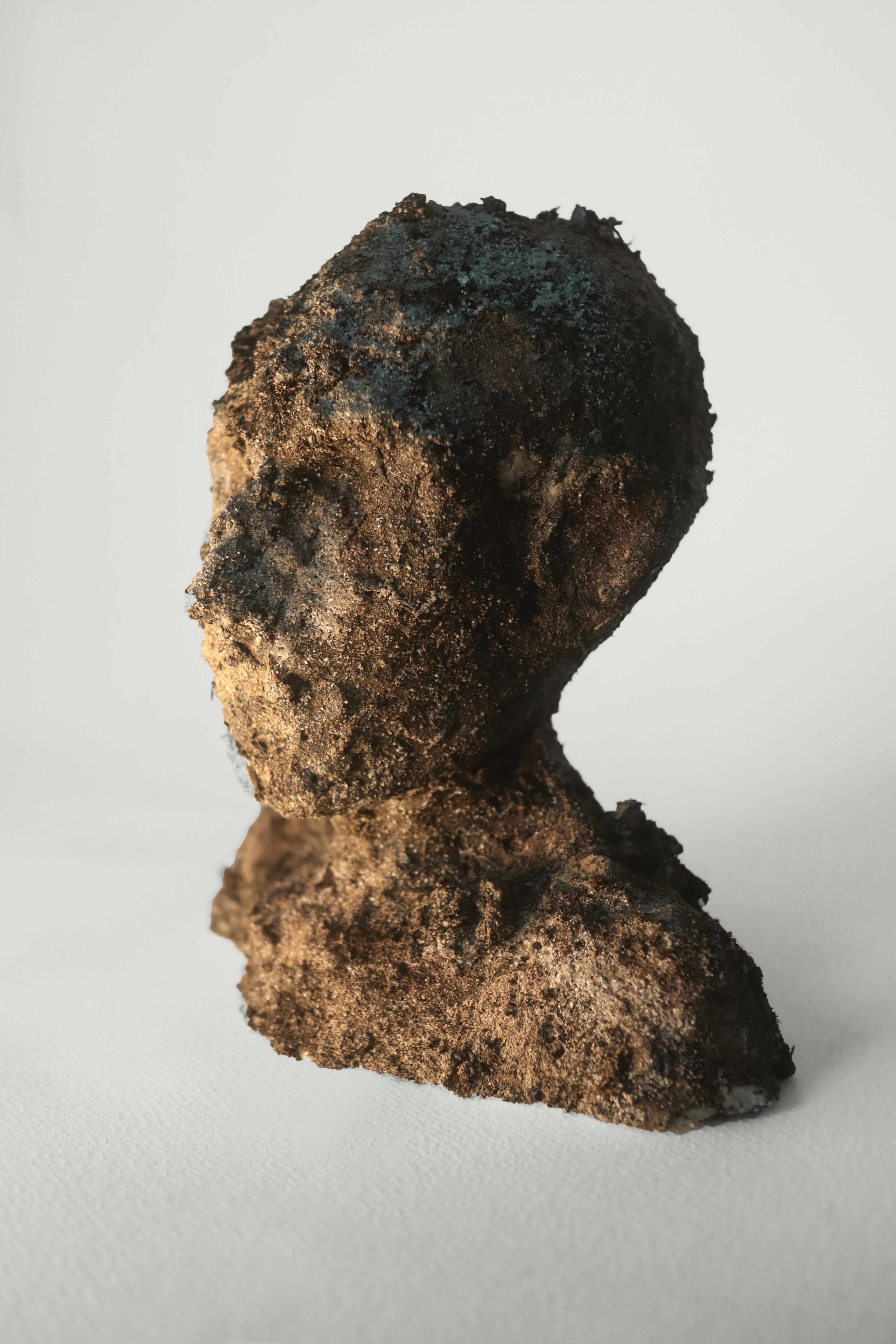

Obsolete (Fragments) I & II, 2017
Sculptures, Mixed Media incl. clay, soil, sand, mortar, rocks, pigments, PVA, plaster, metal.
28 x 24 x 15 cm ; 25 x 12 x 16 cm
With this serie of sculptural objects, Joao presents us these objects as archaic objects in a near state of destruction. These ruins take on mythologies, and the destruction on the classic representation of our collective identities.
The tactile presence of these ruins, their suspense, their revolving shadows, their everydayness, is magnificent for the psyche. It is the conjunction of the banality of a stroll and the immanence of another time, of another instant, unique, a time of catastrophe.
(...)
What kind of catastrophe so unrelentlessly pursues ruins? What
is a ruin that needs to be demolished and buried again? The sadistic irony of catastrophe is that it secretly awaits for things, even ruins, to regain their beauty and meaning only to destroy them once again. It is intent upon destroying the illusion of eternity, but it also plays with that illusion, since it fixates things in an alternate eternity.1
While ruins have been a popular object for nostalgic yearnings of a better past, they also harbour an ambivalent potential for moral and historical critique. 2
These objects are ambiguous in the way they appear to us, in gruesome detail and flickering form, as material deposits and layers of dust, cement, soil, sand and gravel, reminiscent not of human activity, but of slow decay found in archeological sites. This positions the intention of these works to be working with instead of against the entropic forces of nature and the vector of time.
2. Vandevoordt, Robin.(2016).Ruin, allegory, melancholy: on the critical aesthetics of W.G. Sebald’s The emigrants and The rings of Saturn. Transformations: journal of media and culture. 28., pp.197 ,